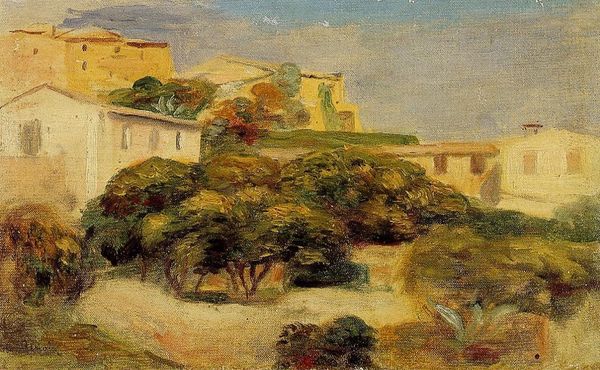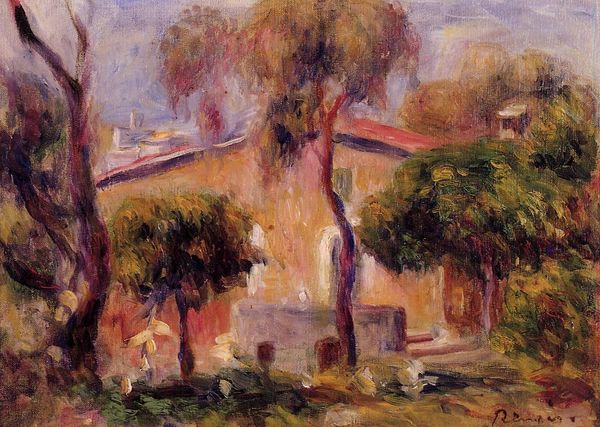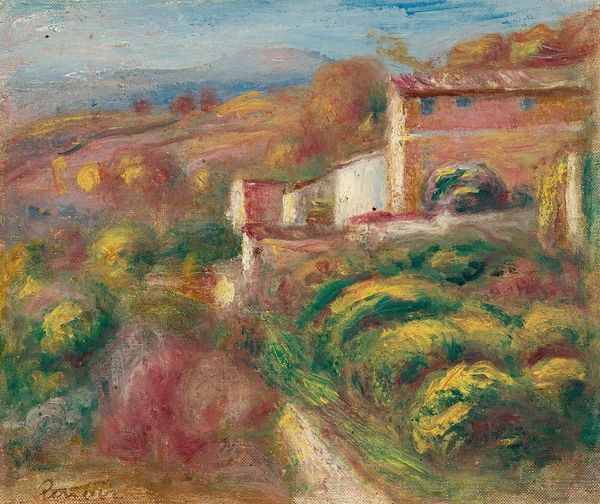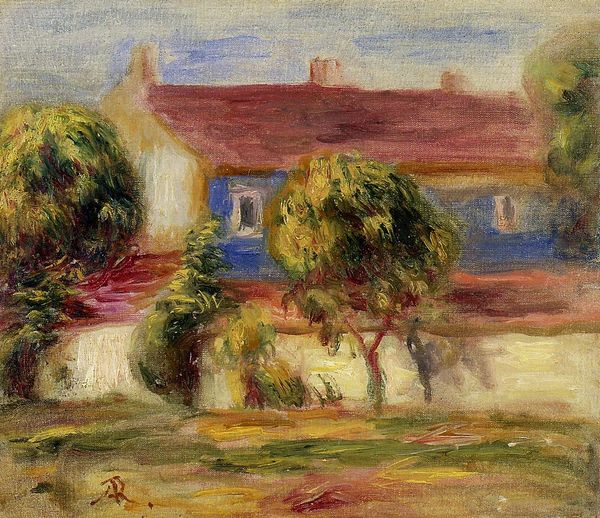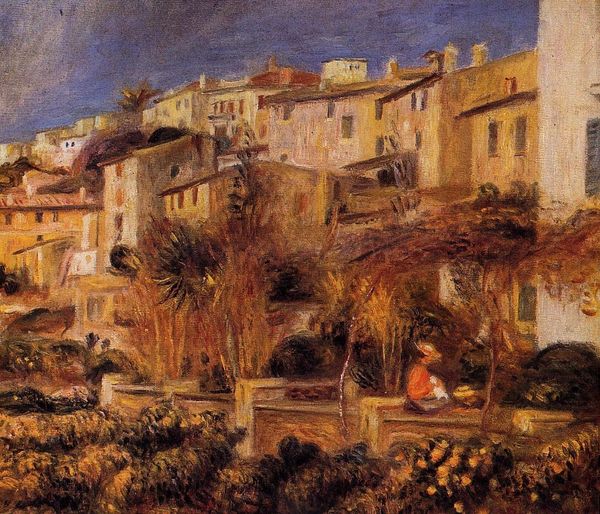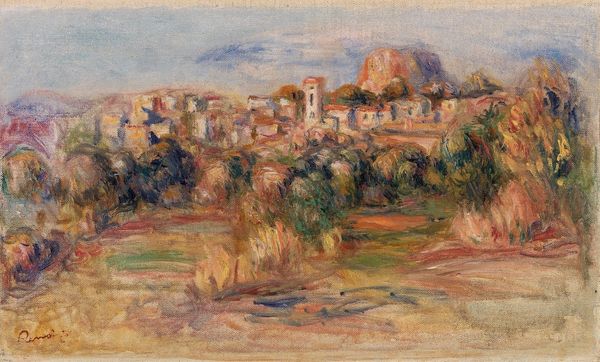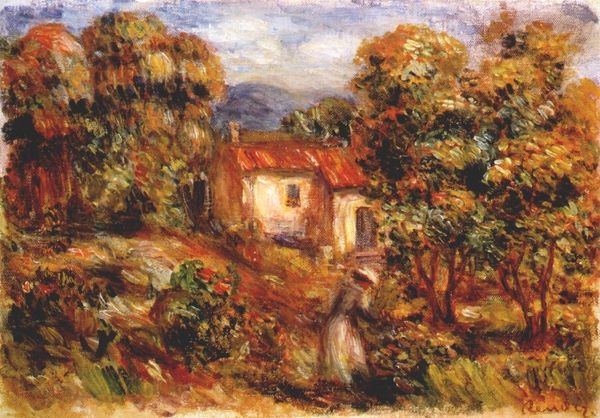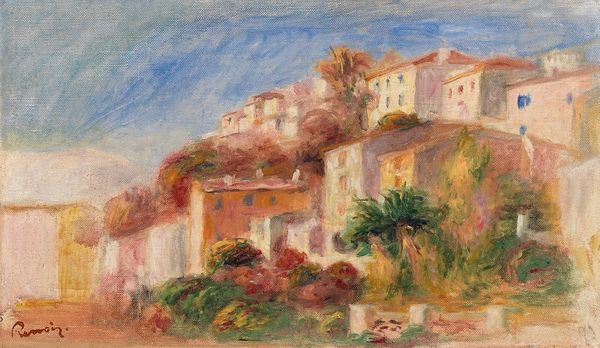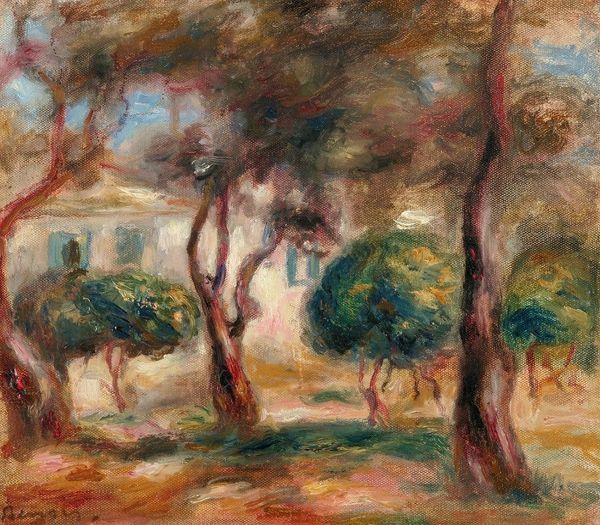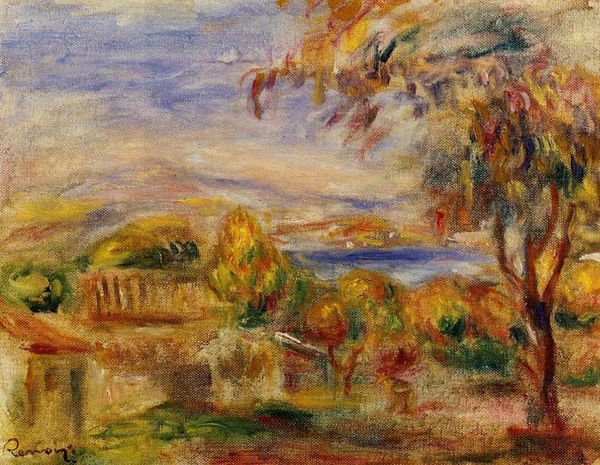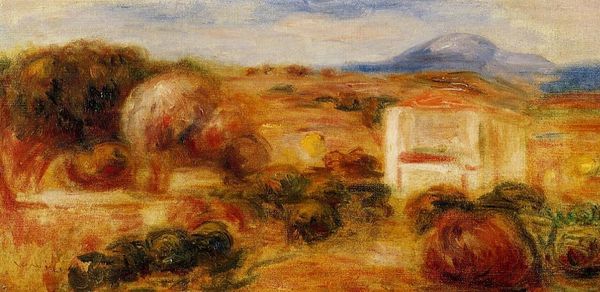
Copyright: Public domain
Curator: Standing before us is Renoir's "Houses at Cagnes," painted around 1910. It depicts a village scene bathed in the warm light of the Mediterranean. Editor: The overall effect is... blurry. Almost like a half-remembered dream. The structures blend into the landscape, losing their sharp edges. Curator: This is a key characteristic of Renoir's late style, particularly his Impressionistic rendering. The softening of form wasn't simply an aesthetic choice; his later works also address issues of class and urbanization. The dissolution of concrete structure could reflect a yearning for an ideal of a past. Editor: But look at the composition itself, how he uses horizontal layering to establish depth. The dark, almost muddy foreground, then the mid-ground of the building and lastly, the lighter area behind. Renoir pulls us into the picture. Curator: Absolutely. What could this almost visceral embrace evoke at this stage of his career? Consider Renoir's complex relationship with women, and, subsequently, patriarchal systems and the politics in French history. Editor: I can concede that the browns and ochres could reference older academic landscape painting. His late work feels much freer, but what might that be if he had more control. It isn't so much about challenging norms, but instead about playing with tone and space. Curator: Yes, the earthy palette dominating the scene could echo working class associations. Renoir frequently represented working class people with an approach of observation rather than judgement or praise. However, this contrasts significantly in his treatment of bourgeois women. Editor: See how the light interacts with the strokes? In essence, we see his attempt to merge color and light and it has that hazy and dream-like state we talked about initially. Curator: Food for thought. It compels us to question representation and ideology not only then, but in our current moment. Editor: A successful play between visual perception and conceptual understanding, I would agree.
Comments
No comments
Be the first to comment and join the conversation on the ultimate creative platform.

